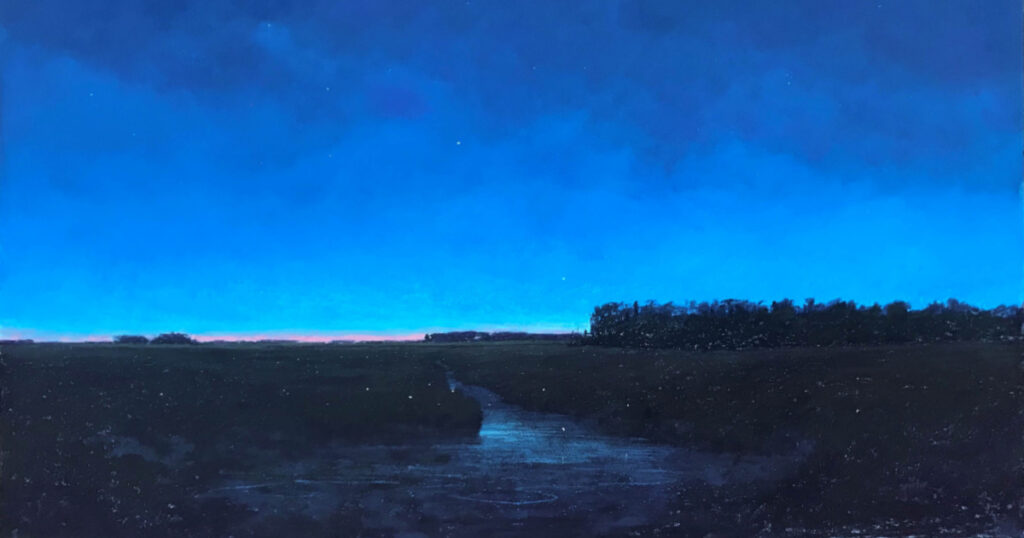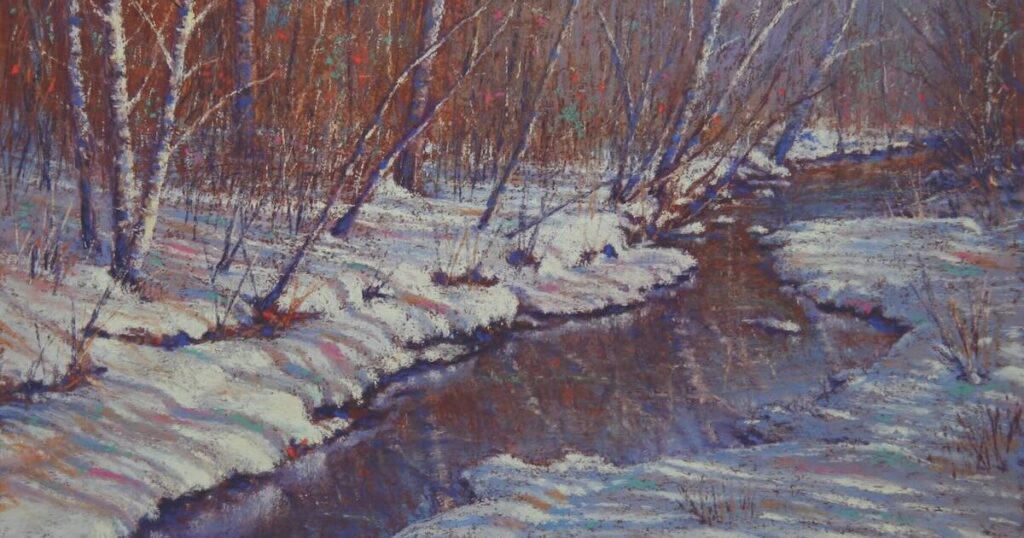Making Painting Less Work, More Fun


Painting can be an intense exercise. All of us first come to painting with enthusiasm. It’s a joyous adventure filled with possibilities. Every new experience and accomplishment is cause for celebration. As we get deeper into the craft, we begin to understand just how difficult it is. So much effort can be put into learning how to paint that we can forget to play and to have fun artistically.
The importance of remembering to have fun is something I was taught many years ago while learning to play tennis. I loved the game but knew I needed a lot of guidance to play it well. I went to the local tennis club and inquired about lessons. The resident pro was a world-class player and took me on to the court to assess my skill level. After he hit a few balls over the net and I energetically attempting to hit them back, we approached the net. “Richard”, he said, “you are one of the worst players I have ever seen. You are awkward and have taught yourself to do every tennis move wrong, but you have such great enthusiasm for the game that I am willing to take you on as a student with one condition: You will do the lessons I lay out without objection, even if it entails hours of hitting a ball against a wall, and you will pay me a lot of money for the privilege. This will take considerable time and great effort on your part. If you agree to my terms, I have one more very important request: You have to remember to continue to play the game with your friends and just have fun between the lessons. It’s the most important key.”
When I am feeling like painting is becoming just a lesson and a bit of an exercise, I like to give myself permission to have fun and to be playful with the underpainting and subject matter. By not over-thinking the underpainting and allowing myself to spontaneously respond, creative possibilities emerge. If it is a mess, I cover it up and correct it with pastel.
When I notice that subject matter is becoming a bit predictable and formulated, I play around by selecting just a section of a scene and have fun with its textures and rhythms. Wooded areas are great for this. Both of these practices lighten me up and bring back the enthusiasm I have for the painting game. The kid comes out again.
If you have a specific way you to encourage your creative child to have more fun, please post a comment. It’s always interesting to hear how others nurture the playful side of painting.
MORE RESOURCES FOR ARTISTS
• The Pastel 100 Competition deadline has been extended to September 1. Enter your finest pastel work today for a chance to win prizes and prestige!
• Watch art workshops on demand at ArtistsNetwork.TV
• Online seminars for fine artists
• Sign up for your Artist’s Network email newsletter & receive a FREE ebook





One of the things I do to keep it fun is play around with new supplies or new surfaces or new ideas. I tell myself I’m just goofing around getting used to the materials or technique. The painting may come out fantastic but if it doesn’t, I still had fun and got a better grasp of how to use whatever I experimented with.
The other thing I do to get playful with pastels is to try challenges like a limited palette, a randomly chosen limited palette, a series on different colored surfaces. Any kind of challenge that sets specifics will get me interested in playing and the game is for me to win, get a cool painting done with those limits. I’ve come up with some fantastic works on challenge games like that.
Another stimulating playtime game is to just open all the boxes and use many different pastels at the same time. If I open my pastel box where I combined a lot of different sets, just seeing them laid out in chromatic order, light to dark in rows will make me want to play with them. The colors suggest subjects. Sorting my pastels will get me warmed up and thrilled.
So will looking at any of your paintings or any by other artists I admire. If I see an effect I like, I’ll try it.
Sometimes I do demo projects or adapt demo projects to use that palette and surface and play with them. They don’t even need to be finished paintings, the demos are just for myself. Getting to play with them instead of having to have it come out well makes it fun – and then it’ll come out well. Sometimes a demo project morphs into an original painting in the process because I kept making changes doing it my way until it’s not recognizable compared to the demo.
I do some of my best paintings when I set out to just play with my supplies. That is such valuable advice. Thank you for this article!
Richard. Play is such a good thing. I loved your blog and it inspired me to play just a bit more. Sometimes doing just watercolors is a bit of play because I am not too serious about them. Then I can use the spontaneity
in my under paintings.
Richard,
I read your blog and have been thinking about what’s fun about painting. Then when your blog announcement showed up on my Facebook page (as it probably did on 800+ other pages) I decided I would post my thoughts.
You asked the question. Here goes my answer:
~Doing an underpainting en plein air with unusual colors and ‘eavesdropping’ on comments from passers-by.
~Putting greens and blues into the faces of portraits I am working on.
~Filling my studio with incredible music while I paint–Jon England and Chris Botti being my current favorites.
~Creating a ‘Lessons Learned’ document for each painting I have attempted since the workshop–what the challenges were, what my thinking was, what worked, what didn’t. What fun it is to learn from my ‘experiments’ (even the failures), and how exhilarating it is to sense artistic growth.
~Finding places in my new landscape paintings to put those intriguing dots of light, those ‘bits and pieces’, all those ‘mckinleys’ as I now call them, which I never saw before.
Richard, I could tell you were having fun with this painting. It brought tears to my eys – it is so beautiful! I tend to get too serious with my painting, tennis and silversmithing, too. So I’m printing out a large print of this painting to keep in my studio to remind me to keep relaxed and have fun.
Thanks for sharing so much of yourself every week. I wish you’d come to Tucson sometime for a workshop.
Richard!
I always love your words of wisdom and advice. You know of all people, I need to play more and work less at my art, thank you. But, I must share that I truly believe that this painting is the MOST beautiful I have seen on your Pastel Pointers Blog! So inspirational. Your work never ceases to amaze me! Thank you for doing what you do.
My best to you and your work…
Patricia